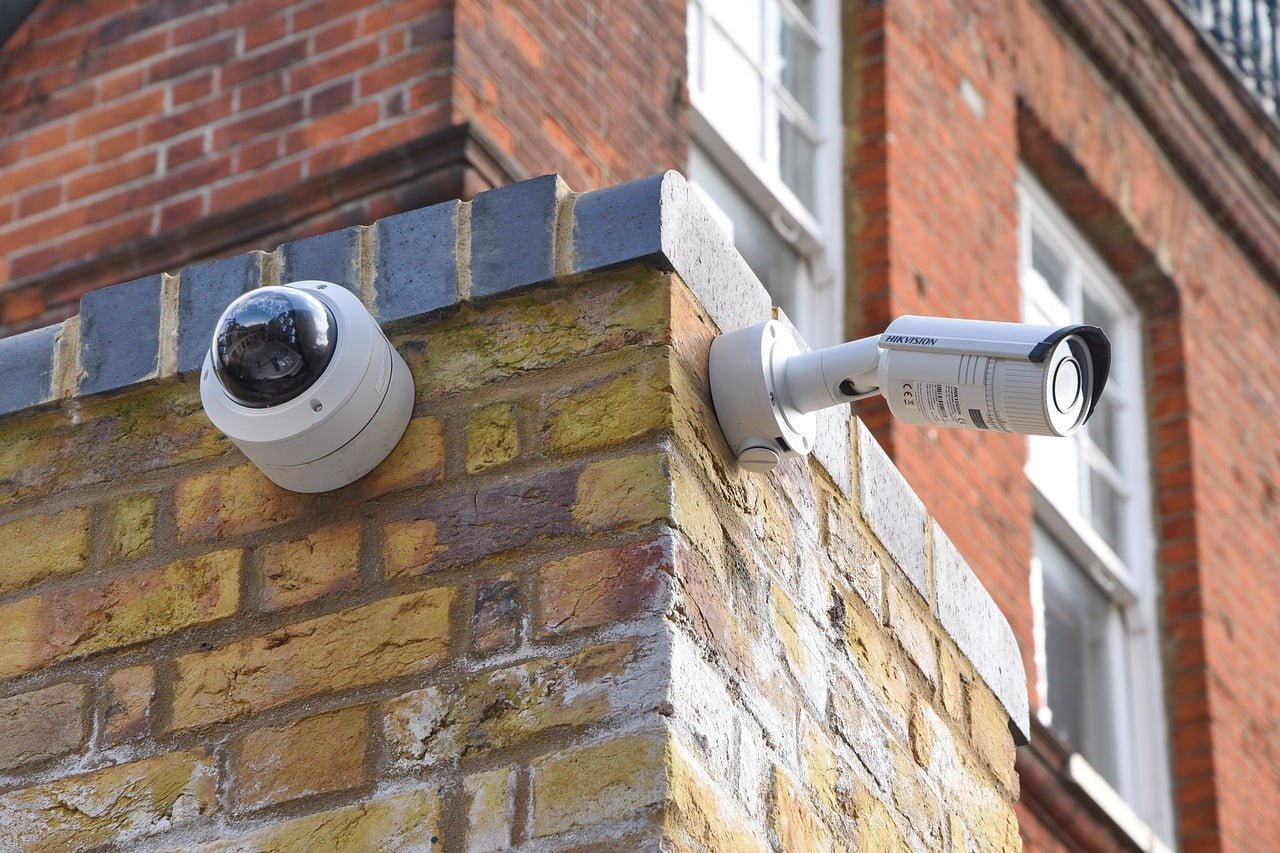Setting Up Home Security: Things required for CCTV installation for homes
Home security plays a critical role in safeguarding one’s property and family. With the rising crime rates in many urban and suburban areas, the implementation of a robust security system is paramount. In this post, we shall see the Things required for CCTV installation for homes, if you are planning to setup home security.
The advantages of installing a home security system extend beyond crime prevention. One of the most significant benefits is the peace of mind it provides. Knowing that your home is monitored around the clock allows homeowners to feel at ease, whether they are present or away. Home Security systems also decrease the likelihood of theft and damage, as it deters potential troublemakers.
Innovations such as smart cameras, motion detectors, and integrated alarm systems have revolutionized the way we protect our homes. Modern CCTV systems not only provide real-time monitoring but also offer remote access via smartphones and other devices, enabling homeowners to keep a vigilant eye on their property from virtually anywhere including timely alerts.
Things required for CCTV installation for homes
To establish a reliable home security system, recognizing the fundamental equipment required for a basic CCTV setup is crucial. There are many types of home security devices in the market. Therefore, the things required would vary, which also depends on the kind of setup you want to do. This comprehensive guide covers the essential components needed for effective surveillance and security.
Security Cameras: The cornerstone of any CCTV system, security cameras come in various forms, each suited to specific needs.
Bullet cameras
designed for long-distance viewing and mounting on walls or ceilings.
Dome cameras
dome-shaped, offer a more discreet appearance, often used for indoor surveillance.
Wireless cameras
wireless, operates through Wi-Fi network, ideal for isolated locations.
Digital Video Recorder (DVR) or Network Video Recorder (NVR): These recording devices are pivotal in a CCTV setup.
- A DVR is used with analog cameras, converting their signals into digital video and storing them on a hard drive.
Example: CP PLUS CP-UVR-0801E1-CV2 1080P Full HD 8 Channel Digital Video Recorder - An NVR performs a similar function but pairs with IP cameras, recording and managing footage directly over an IP network.
Example: TP-Link VIGI NVR1008H VIGI 8 Channel Network Video Recorder | H.265+ | 80 Mbps Video Access
Both units enable playback, storage, and management of the video captured.
Power Supply Units: Every camera needs a consistent power source, making power supply units essential. Typically, each camera may come with its own power adapter, but centralized power supply options can also reduce cable clutter and facilitate easier management.
Cables: Depending on the type of cameras in use, different cabling solutions are necessary.
- Coaxial cables are used with analog cameras and DVR systems, facilitating both power and video signal transmission.
- Ethernet cables (Cat5e or Cat6) are needed for IP cameras and NVR setups, enabling both power (if using Power over Ethernet, PoE) and data transmission.
Monitor: For real-time viewing and footage review, a monitor is required. It connects to the DVR or NVR, providing live feeds and access to stored recordings. A dedicated monitor ensures that security footage can be continually reviewed without interrupting other computer work.
Mounting Brackets or Stands: Installing cameras securely in optimal positions mandates suitable mounting equipment. Brackets and stands ensure that cameras are stable and positioned effectively to cover the desired surveillance areas. These installation accessories are vital for achieving proper coverage and deterring tampering.
By understanding the function and necessity of each of these components, setting up a basic CCTV system at home becomes a streamlined and effective process for enhancing security.
Step-by-Step Guide to Setting Up CCTV at Home
Setting up a CCTV system at home can significantly enhance your security, providing peace of mind and a deterrent to potential intruders. Follow these steps for a successful installation:
1. Plan Camera Placement
Begin by surveying your home to identify vulnerable areas such as entry points, ground-floor windows, and secluded spots. Ensure your camera placement covers all these critical areas. Use a diagram to map out where each camera will be positioned, keeping in mind the field of view necessary to capture the entire area without blind spots.
2. Choose Between Wired and Wireless Systems
Decide whether a wired or wireless CCTV system suits your needs. For wired systems, consider the cable management process, including how to run cables discreetly and securely. For wireless systems, ensure you have a strong and consistent WiFi signal at each camera location.
(See here – How to Set Up a Home Network : Essential Things required for setting up Home Network )
3. Mount the Cameras
Securely mount your cameras at the planned locations. Use appropriate brackets and fixtures to ensure stability. Place cameras high enough to avoid tampering but low enough to capture necessary details. Verify the angle and adjust the camera to ensure optimal coverage.
4. Run Cables / Set Up Wireless Connections
If using a wired system, carefully run the cables from each camera to the DVR (Digital Video Recorder) or NVR (Network Video Recorder). Secure the cables with clips or conduits to prevent tampering or accidental disconnection. For wireless systems, follow the manufacturer’s instructions to connect each camera to your home network.
5. Connect Cameras to DVR/NVR
Connect each camera to the DVR or NVR. This step often involves plugging in coaxial or Ethernet cables, depending on your system type. Verify each connection for a secure and stable link.
6. Power Up the System
Power up the entire system, including cameras and the DVR/NVR. Ensure each component is receiving power and functioning correctly. Check each camera feed to confirm proper operation and adjust settings as needed.
7. Configure Settings for Optimal Performance
Access the system’s settings via the DVR/NVR interface. Adjust motion detection zones, set recording schedules, and optimize quality settings. Ensure remote access is configured if you wish to monitor the footage from a smartphone or computer remotely.
Lastly, troubleshoot common issues such as connectivity problems or poor image quality. Ensure your cables are correctly connected and that your wireless signal is strong. Regular maintenance, including cleaning camera lenses and checking connections, will keep your CCTV system functioning optimally.
Basic Security Cameras for home security

TP-Link VIGI C320I Bullet Network Camera
2MP HD Outdoor IR Bullet Network Camera | PoE | IP67 Waterproof | H.265+ | Human & Vehicle Classification | Smart Detection

Trueview HD Bullet CCTV Camera
3MP 1296p HD, 4G Sim Based Bullet CCTV Camera, IP66 Waterproof Rating, 9 IR LED, 2 Way Audio, Night Vision, Motion Sensor

Tapo TP-Link C200 360° Wi-Fi Camera
2MP 1080p Full HD Pan/Tilt Home Security Wi-Fi Smart Camera| Alexa Enabled| 2-Way Audio| Night Vision| Motion Detection| Sound and Light Alarm
Full Set CCTV solution for home security (Cameras, DVR/NVR, Hard disk etc)

CP Plus CCTV Security Set
5MP 8 Channel DVR, 5 Cameras, 2 TB HDD, Power Supply

HIKVISION Security Camera Kit
4 Channel HD DVR with 2MP (1080P) 2 Dome & 2 Bullet Cameras Combo Kit without Hard Disk
Maintaining Your Home CCTV System
Regular maintenance of your home CCTV system is crucial to ensure its optimal operation and longevity.
A practical maintenance schedule should include monthly, quarterly, and annual tasks. Monthly, you should clean the camera lenses to remove dust, dirt, and any other debris that might obstruct the view. This simple task helps in maintaining clear and high-quality footage. Quarterly, it’s advisable to check the system for software updates. Manufacturers frequently release updates to improve system performance and security features. Keeping the software up-to-date ensures your CCTV system runs efficiently and securely.
Troubleshooting common problems promptly is also essential. Blurry footage often results from dirty lenses, improper focus, or hardware malfunctions. Regularly cleaning the lenses and checking the focus adjustments can resolve clarity issues.
If you encounter signal loss, inspect for possible cable damage or interference from other electronic devices. Power issues might stem from insufficient power supply or faulty connections; checking and securing all connections can usually rectify such problems.
Effective data storage management is another critical aspect of maintaining your CCTV system. Regularly backing up footage prevents data loss and facilitates easy retrieval of important recordings. It’s advisable to store backups in secure, off-site locations or use cloud storage solutions for added security. Periodically reviewing and upgrading your equipment ensures your surveillance system keeps pace with technological advancements, providing you with the most current and efficient security features available.
In this post, we covered the Things required for CCTV installation for home security in general. As stated above, the type of equipment required would depend on the kind of setup you want. You can go for total wireless setup or wired setup or mix of both. Basic home security need not be expensive to setup. There are many option out there. You can start with basic equipment. But if you have the budget, it is advisable to go for professional service.

